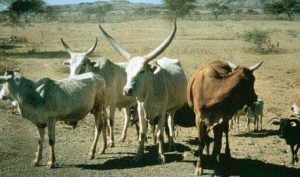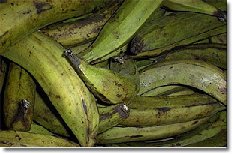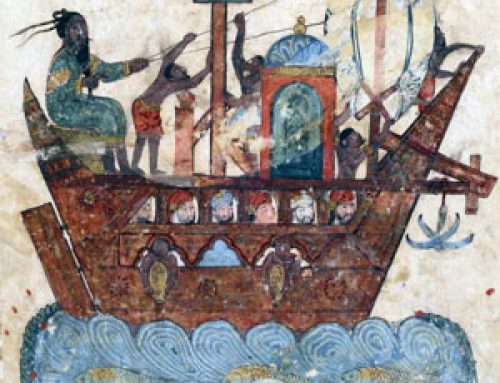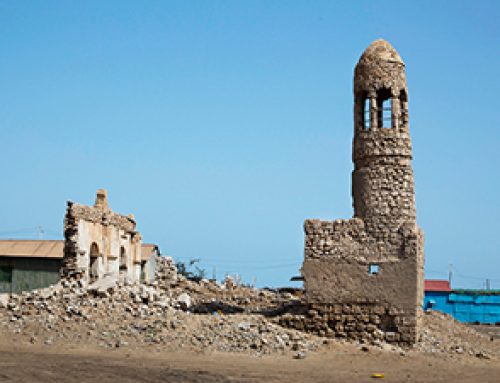
Medieval African food: an olive orchard in Tunisia
The Romans grow olive oil in North Africa
The foods people ate in Africa didn’t just stay the same. Instead, they changed slowly over time. Around 800 BC, with the arrival of Greek and Phoenician invaders, the people of North Africa began to plant olive orchards and produce olive oil. They ate a lot of olives and olive oil, even though they also shipped a lot of olive oil all over the Mediterranean and Europe, and even as far away as India. But olives wouldn’t grow south of the Sahara Desert. The weather wasn’t right for them.

African cattle
South Africans start to eat beef and drink milk
Then in South Africa, the Khoikhoi got hold of cattle around 400 AD and they began cattle herding. So after that, Khoikhoi people ate a lot of meat. Soon they began milking their cows too and drinking milk. Their DNA adapted to the new diet, so even grownups could drink milk without getting sick.

Bananas
Bananas and sugar come to Africa from India
Then the process sped up a lot more. Around 800 AD, in the Middle Ages, African people began to eat a lot of new foods all at once. Indonesian settlers in Madagascar, and traders from India and Iran, brought many new kinds of Asian foods to Africa. Medieval African food was very different from African food in the Iron Age.

Plantains (related to bananas)
There were bananas, plantains, coconuts, and sugar (from sugar-cane). African people also started to eat some new kinds of yams, and new kinds of rice. These foods came first to the east coast of Africa, but they quickly spread with Islam to North Africa and West Africa too.

Coconuts
Coffee, couscous, and rice
Sometime before 1000 AD, soldiers in East Africa also began to eat coffee beans when they needed extra energy for fighting. Soon East African traders were selling coffee to Islamic traders from Yemen. Around the same time, people in North Africa began to make their millet into couscous, which replaced millet porridge (puls) as the basic staple food of North Africa from the Atlantic to Tunis. The adoption of rice in East and West Africa may have influenced the switch, because couscous looks a lot like rice.
By this time, most people in North Africa, West Africa, the Congo river basin, and East Africa were farmers. In south-east Africa most people were cattle herders. Only in the most dry desert areas, or in the wettest, thickest part of the rain forest, were people still hunting and gathering most of their food.
Did you find out what you wanted to know about medieval African food? Let us know in the comments!
Learn by doing – African food project
African food and the Columbian Exchange
Bibliography and further reading about African food:
Food and Recipes of Africa (Kids in the Kitchen.) by Theresa M. Beatty
The People of Africa and Their Food(Multicultural Cookbooks) by Ann Burckhardt
A Taste of West Africa (Food Around the World) by Colin Harris




that was legginess
[…] https://ethnobiomed.biomedcentral.com/articles/10.1186/1746-4269-9-60 https://quatr.us/africa/medieval-africa-food-people-eat.htm http://motspluriels.arts.uwa.edu.au/MP1500jw.html […]